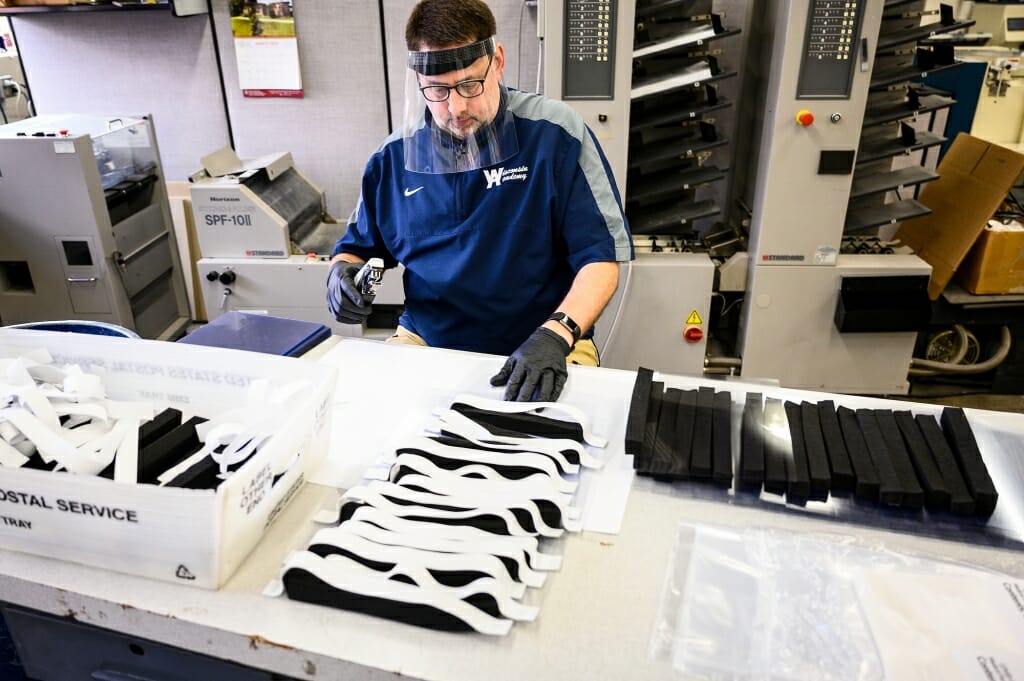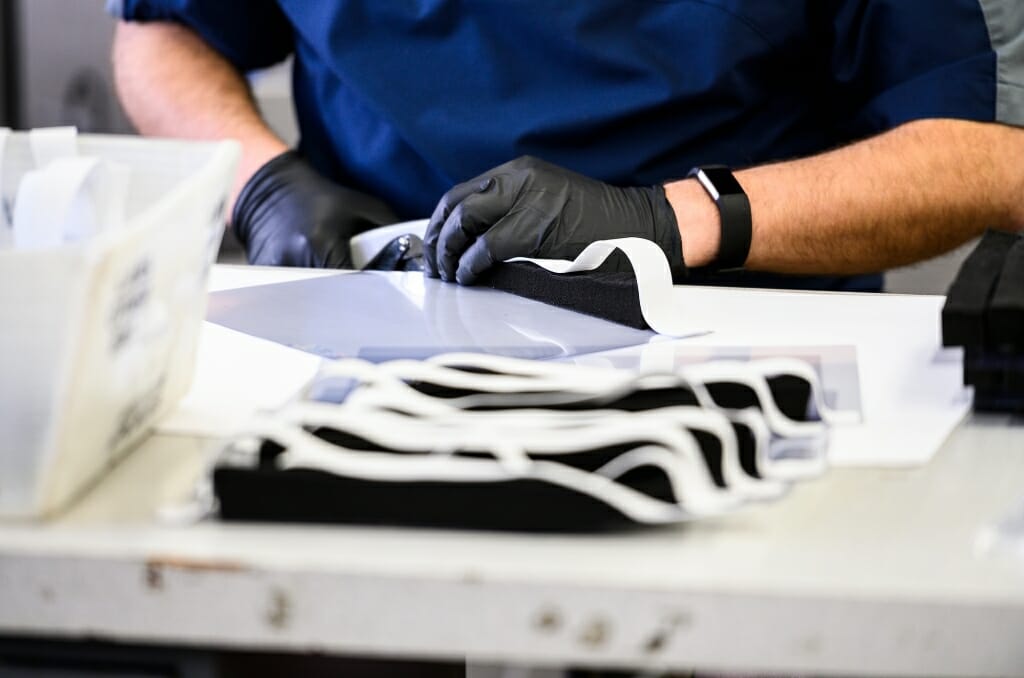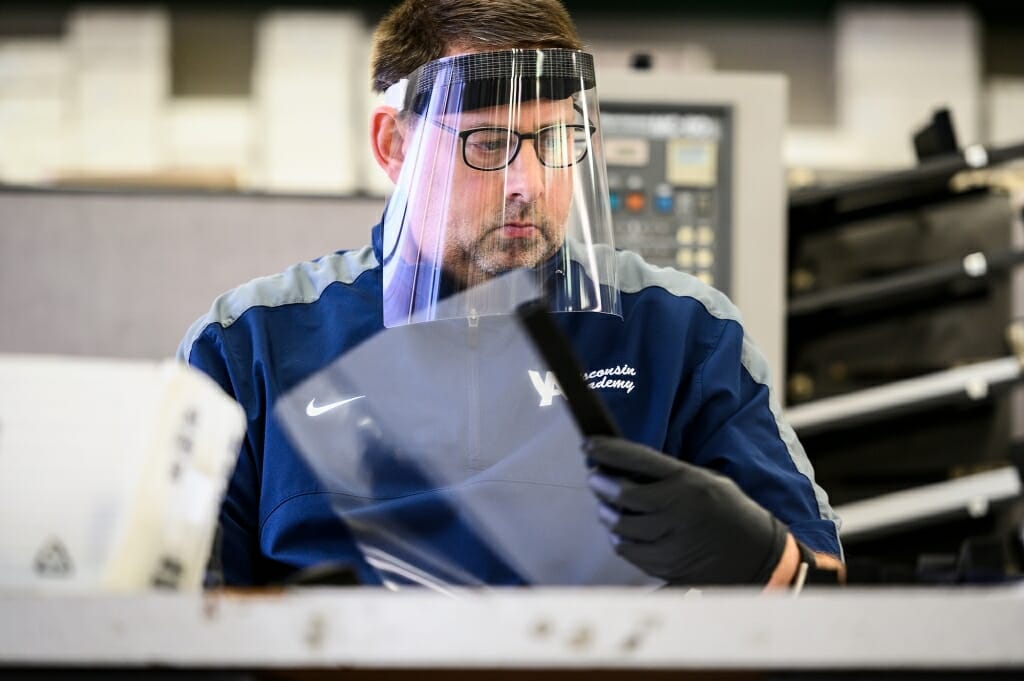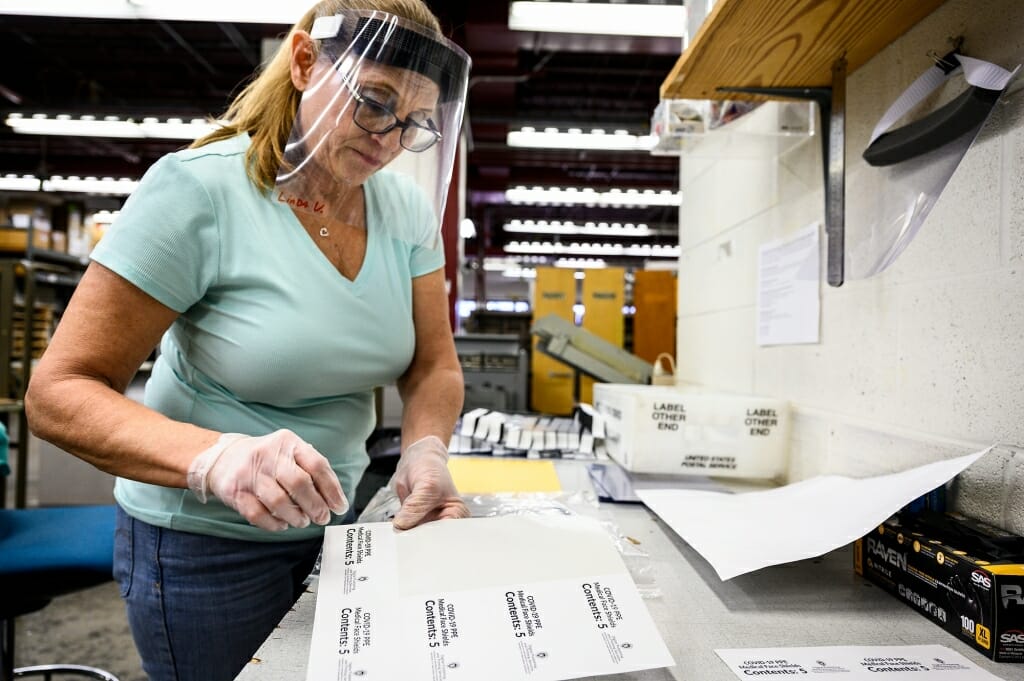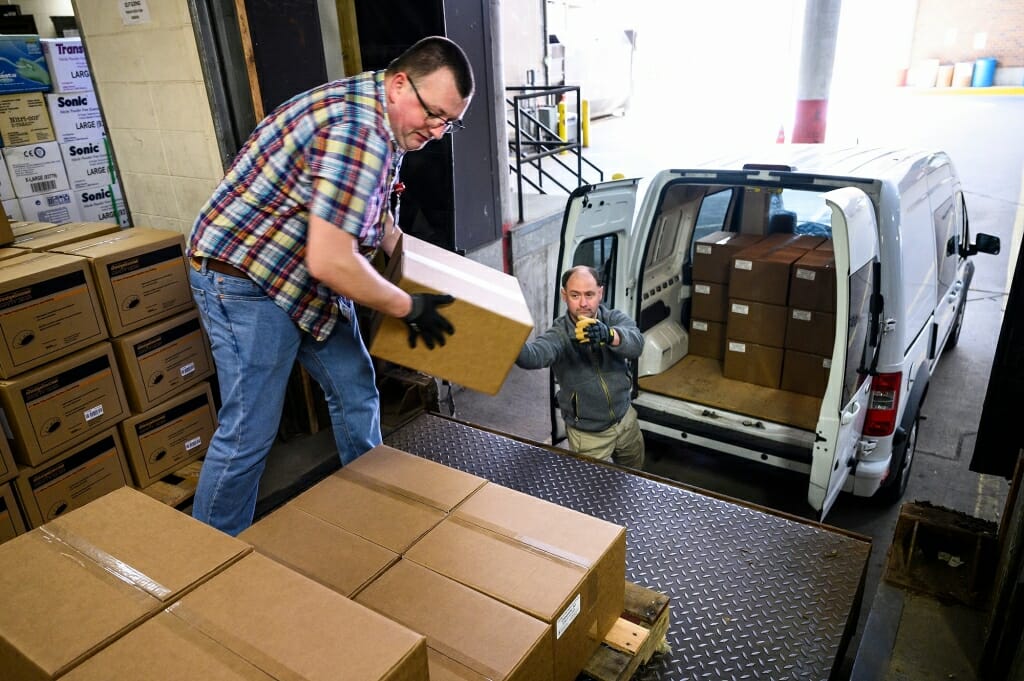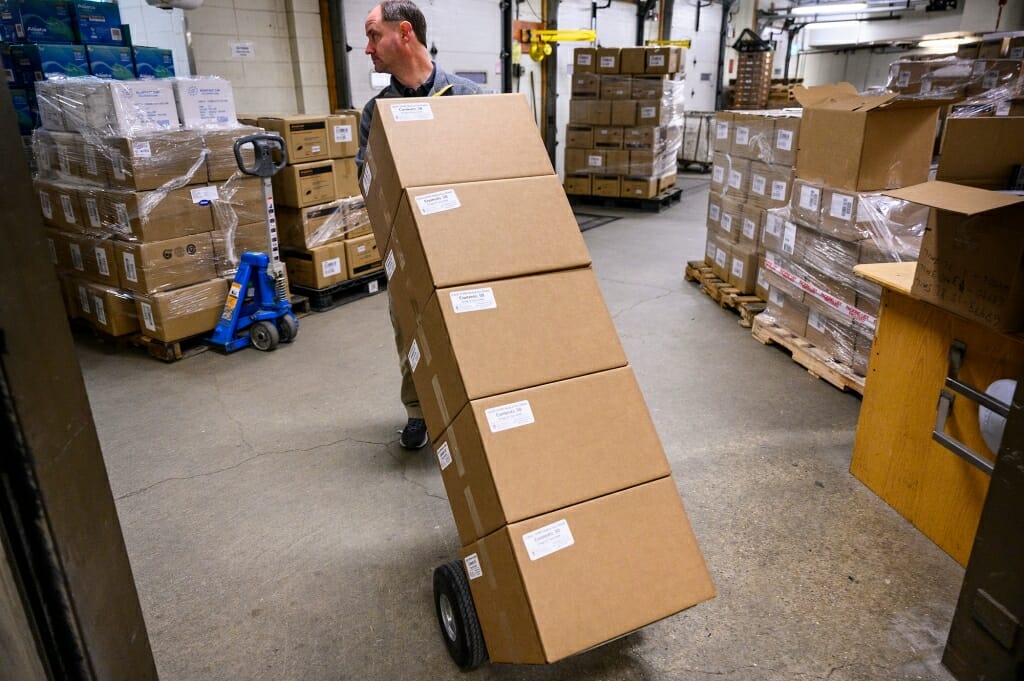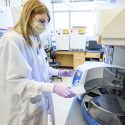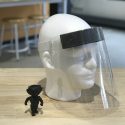UW–Madison publishing and printing team makes face shields to protect UW Hospital workers
MADISON – Trying to unwind after a long, hectic day working at UW Health, Leigh Larson couldn’t fall asleep.
As director of graduate medical education and medical staff administration, her mind raced through the frightening scenarios that lay ahead for her health care colleagues bracing for the COVID-19 storm.
Both concerned and restless, Leigh and her husband Geoff began discussing the ominous headlines amid the nationwide shortage of personal protective equipment, or PPE, the three-letter acronym many Americans now know by heart. It’s what helps shield doctors, nurses and other health care workers from contracting the virus themselves.
Immediately, Geoff’s thoughts turned to his recent UW Health medical appointments, when he was diagnosed with influenza A and pneumonia. Remembering when the doctor “masked up” and ran his tests, Geoff asked Leigh: “Was the face shield the doctor wore that day what you guys use?”
With Leigh’s nod, Geoff jumped out of bed and fired up his laptop. He found a prototype online and determinedly thought: “I think we can do this.”
Bouncing quickly from his role as helpful husband to his day job as director of the UW–Madison Division of Information Technology’s Digital Publishing and Printing Services, Larson began making plans.
‘We make things happen’
At its main campus production center, DPPS staff print and manufacture pretty much any printed materials the campus needs, from standard course packets, business cards and brochures, to building signs, banners and sheets of digitally-printed magnets.
As the largest public, in-house printing operation in Wisconsin, DPPS has the production lines and equipment, and an experienced team.
To help out during a rapidly escalating pandemic, Larson thought, all the DPPS team needed was the right materials and the right plan. He connected with UW Health’s supply chain team to discuss the specifications required in face shields.
Kinho Lee, a DPPS team member, quickly foraged through the websites of Walmart, sewing centers and craft stores to quickly gather the raw materials they needed to assemble the face shields, like strips of latex-free elastic bands.
“We bought everything Walmart.com had,” Larson says. “I’m talking everything.”
The DPPS has since secured a reliable supply chain with distributors to support its ongoing production efforts. It already had a source for the sheets of clear acetate needed for the shields, which DPPS uses to make clear protective book covers for spiral bound books, and found another for the foam that rests on the shield wearer’s forehead.
Production: up to 1,000 shields per day
After UW Health approved the prototype, the DPPS management team finalized preparation for production. With a request from UW Health to make 12,000 face shields as soon as possible, DPPS began efforts to produce a minimum of 1,000 shields a day.
Rich Gassen, Margy Baker, Sue Lind, Tom Harron, and Kinho Lee led the charge to organize production, and DPPS employees are taking turns on assembly lines.
“The shields are critical to UW Health’s ability to keep caregivers safe while treating COVID-19 patients,” says Bob Scheuer, UW Health’s director of materials management. Scheuer expressed gratitude for the many offers of help from UW–Madison faculty and students, as well as the surrounding community. “We are very fortunate to be on the UW–Madison campus and able to take advantage of the great minds and resources.”
In a serendipitous collaboration of Badger ingenuity, the DPPS team is coordinating with the UW Makerspace. In an effort led by Lennon Rodgers, director of the Engineering Design Innovation Lab, UW Makerspace is working with suppliers of raw materials and a broad range of private and public manufacturers of PPE devices so that medical providers across the country that need “Badger Shields” can get them.
For DPPS’s part, at its large print production facility, workers are easily able to adhere to social distancing, with team members spaced far apart on the second floor, cutting the shield materials to size.
A dumbwaiter sends the materials down to the first floor for assembly, eliminating the need for people to physically interact to hand off materials.
In the assembly line downstairs, workers put together the shields with a stack of nine-by-12-inch acetate, pre-cut upstairs with rounded corners, nine inch strips of adhesive-backed foam, and a bin of 14-inch pieces of elastic, stapled from the back to the front so the wearer’s face won’t get scratched.
Shifts of four people assemble the shields, with two others preparing materials, and another person working in the shipping area. As a safety precaution, the workers wear face shields just like the ones they’re manufacturing, as well as protective gloves.
Larson notes that only employees who expressed interest in assembling the shields are coming in to work, along with those maintaining the essential printing services for the university.
“This is crisis mode. Everybody’s watching national television and they feel helpless,” Larson says. “What I’m hearing from our team is: ‘I’ll work any hours you want. I want to help however I can.’”
‘Santa’s workshop’
In fact, he says: “It’s literally like Santa’s workshop – everybody’s playing a part to get this done … We’re in this doom and gloom time, and this is a way they can help at a time when many feel hopeless. All of our production staff are super hard-working people – they love working for the university, and they’re proud to come in every day.”
And the fact that these shields are going to doctors and nurses at UW Hospital, just 2.5 miles away?
“That just makes it mean so much more,” Larson said.

